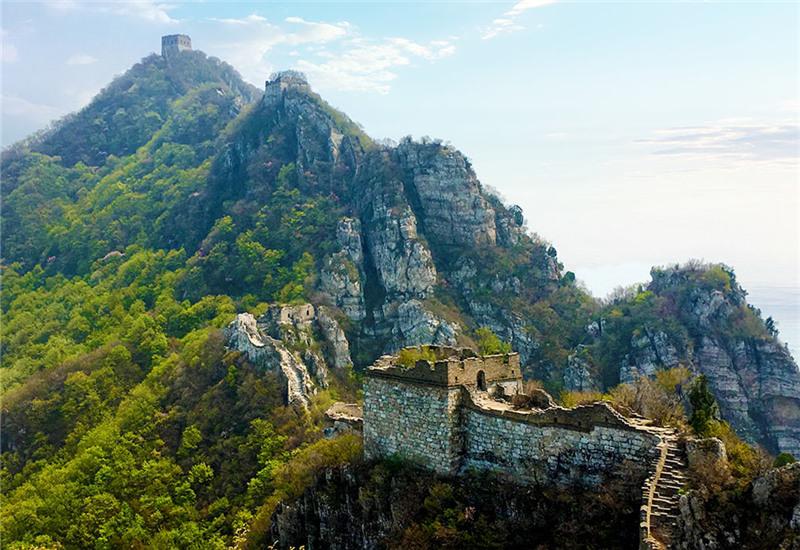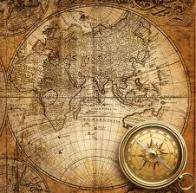10 Unexpected Fun Facts About the Great Wall of China You May Not Know

10 Unexpected Fun Facts About the Great Wall of China You May Not Know
Posted on 27 Dec, 2018
The Great Wall of China is widely regarded as one of the most important tourist draws and landmarks in China, which was built to safeguard the Chinese Empire from enemies to the north. Besides its long and complex history, you can also expect its diverse and breath-taking scenery, such as rugged mountains, vast desert, lush grassland, and even beautiful beaches, as well as the following unexpected fun facts about the Great Wall of China you may not know:

The Jiankou Section of the Great Wall of China
1. The construction of the Great Wall took over 2 thousand years.
The very first parts of the Wall were built as early as in the Spring and Autumn period between the 8th and 5th centuries BC. These walls were constructed mostly with stamping earth and gravel between board frames to resist the attack of swords, spears and other small arms. Several sections of these walls were ordered to be destructed by Qin Shi Huang after he unified China as Qin Dynasty in 221 BC, and then new walls were built to connect the retaining wall along the empire's northern frontier to defend the empire against northern invaders. Considering the difficulty of transporting a large quantity of materials, local resources were used as much as possible to construct the walls. So the walls on the mountain ranges were made by stones from the mountains, and the walls in the plains were made by rammed earth.
Later dynasties continued the construction by repairing, rebuilding, or expanding sections of the Great Wall. The concept of the Great Wall has revived again during the Ming Dynasty (1368-1644) and built every stronger and more elaborate with bricks and stone rather than rammed earth to keep the nomadic tribes out the territory. An estimated up to 25,000 watchtowers were constructed on the wall. The following Qing Dynasty didn’t continue the construction of the Great Wall because of its border extended beyond the walls.
2. The Wall is accurately a series of walls rather than one long continuous wall.
Many people think that the Great Wall is one uninterrupted long structure, while in fact, it's a collection of different sections built by various dynasties along an east-to-west line across the northern border of ancient and imperial Chinese territories.

The Huanghuacheng Section of the Great Wall of China
3. A surprising material can be found in the Wall.
Most parts of the Wall are built with stone, brick, tamped earth, wood, and other unremarkable materials. More interestingly, glutinous rice (sticky rice) flour was used in making the mortar or blinding material to bind the bricks as early as the Qin Dynasty, because glutinous rice has good cohesive properties.
4. The Great Wall is the longest structure ever built by humans in the world.
It's hard to tell the exact length of the Great Wall ever built in ancient China. Experts thought that the Wall was 5,500 miles long. But an archaeological survey done by China's State Administration of Cultural Heritage in 2012 shows that the Great wall stretches 13,170 miles long.

The Jinshanling Section of the Great Wall of China
5. The Great Wall is not one of the Seven Wonders of the Ancient World.
Most people believe that the Great Wall of China is one of the Seven Wonders of the Ancient World. While the truth is that it's one of the Seven Wonders of the Medieval World.
6. The visibility of the Great Wall from space is a myth.
The myth that the Great Wall can be seen from the moon with naked eyes is untrue. This myth can date back two centuries before human beings were able to travel in space. It firstly appeared in the Family Memoirs written by the English antiquary William Stukeley in 1754 and got a got a boost later because of other books and works. The myth has been debunked many times, but still ingrained in popular culture. Unsurprisingly, no astronaut who has set foot on the moon has ever claimed that he has seen the Great Wall from the Moon.
But the visibility from low Earth orbit (with an altitude between 160-2,000 km) is still a controversial question. Some astronauts claimed that they have seen the Great Wall from low Earth orbit with the unaided eye, but other astronauts disputed these claims. NASA claims that it is barely visible only under nearly perfect conditions.

The Mutianyu Section of the Great Wall of China
7. The Great Wall has been described as the longest cemetery on Earth.
The human cost of the wall construction is huge. It has been estimated by some authors that over one million people died building the wall during the Qin Dynasty only. Human remains have been found under parts of the Wall by archaeologists. As such, the Wall has been described as the longest cemetery on Earth.
8. Chinese convicts were involved in the Great Wall construction as a punishment.
Wall construction has been used as a common punishment for Chinese convicts since the Qin Dynasty as the work was very dangerous. According to some estimates, 400,000 workers lost their lives while building the Qin wall.

The Juyongguan Section of the Great Wall of China
9. The Great Wall is not strong enough at warding off invaders.
The Great Wall was built as an important component of China's military defense system to keep out invading forces. Despite all the effort, its various enemies throughout history have passed across the Wall successfully.
10. The Great Wall goes by many names in both Chinese and English.
In China, the term "Long Wall" (长城 Changcheng ) was used to refer to the walls constructed before and during the Qin Dynasty, as in the Records of the Grand Historian finished by Sima Qian in around 94 BC. The longer name "The 10,000-Li-Long Wall" came from the description in the Records of the Grand Historian . Later, the name "The Long Wall of 10,000 Li" was used in the Book of Song published during the fifth century CE. Li is a traditional Chinese unit of distance and is about 1/3 of an English mile. But the use of "10,000 Li" here is figurative, and simple means "immeasurable". Over time, the Wall gained various names, such as "The Outer Fortresses", "The Border Walls", "The Purple Frontier" and "The Earth Dragon". Finally, "The Long Wall" is used to refer to this man-made wonder.
"The Great Wall of China" is its standard name in English, French and German, which was used as early as 19th century and evolved from the name of "the Chinese Wall" used by early modern European travelers. Other European languages still use the name "the Chinese Wall" to refer to it.








